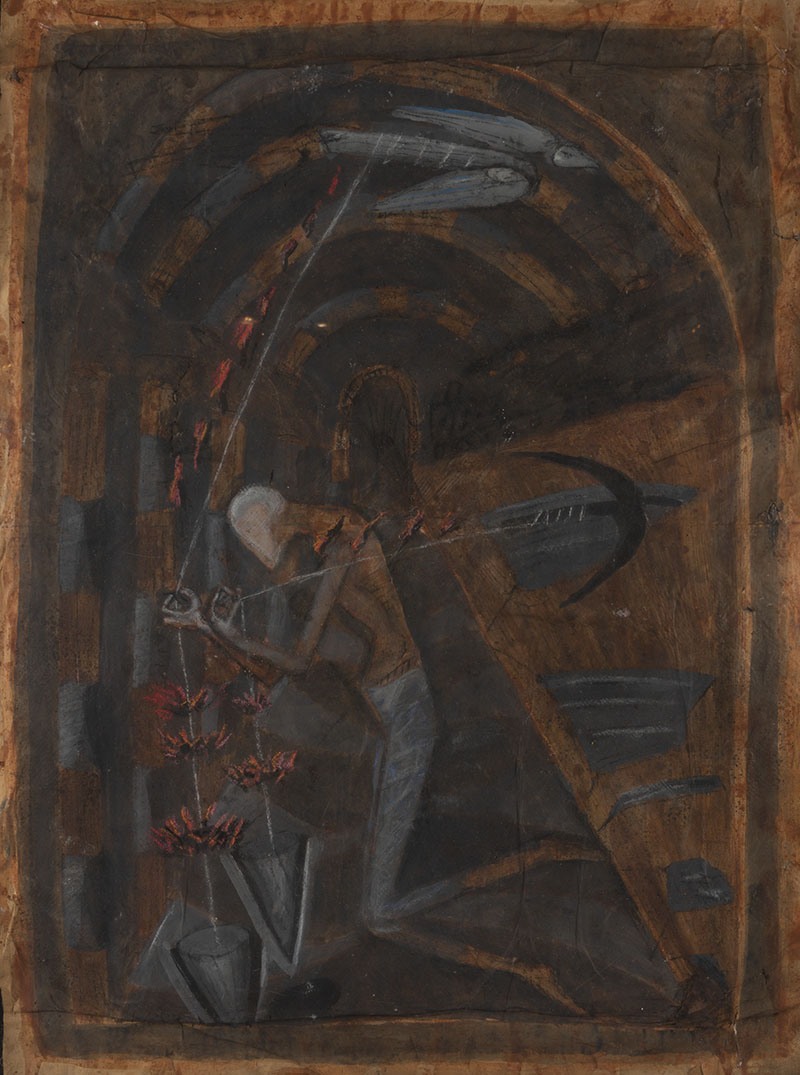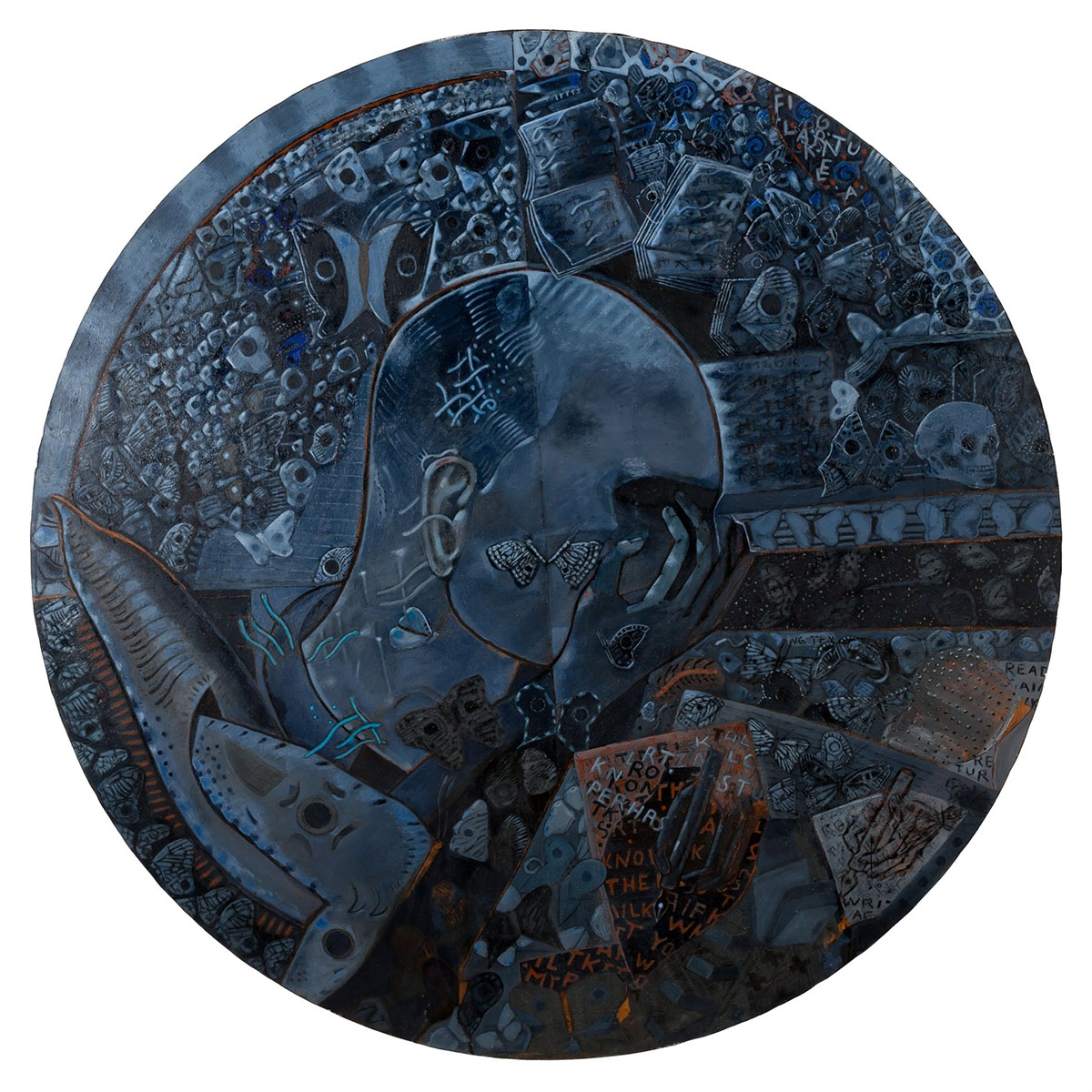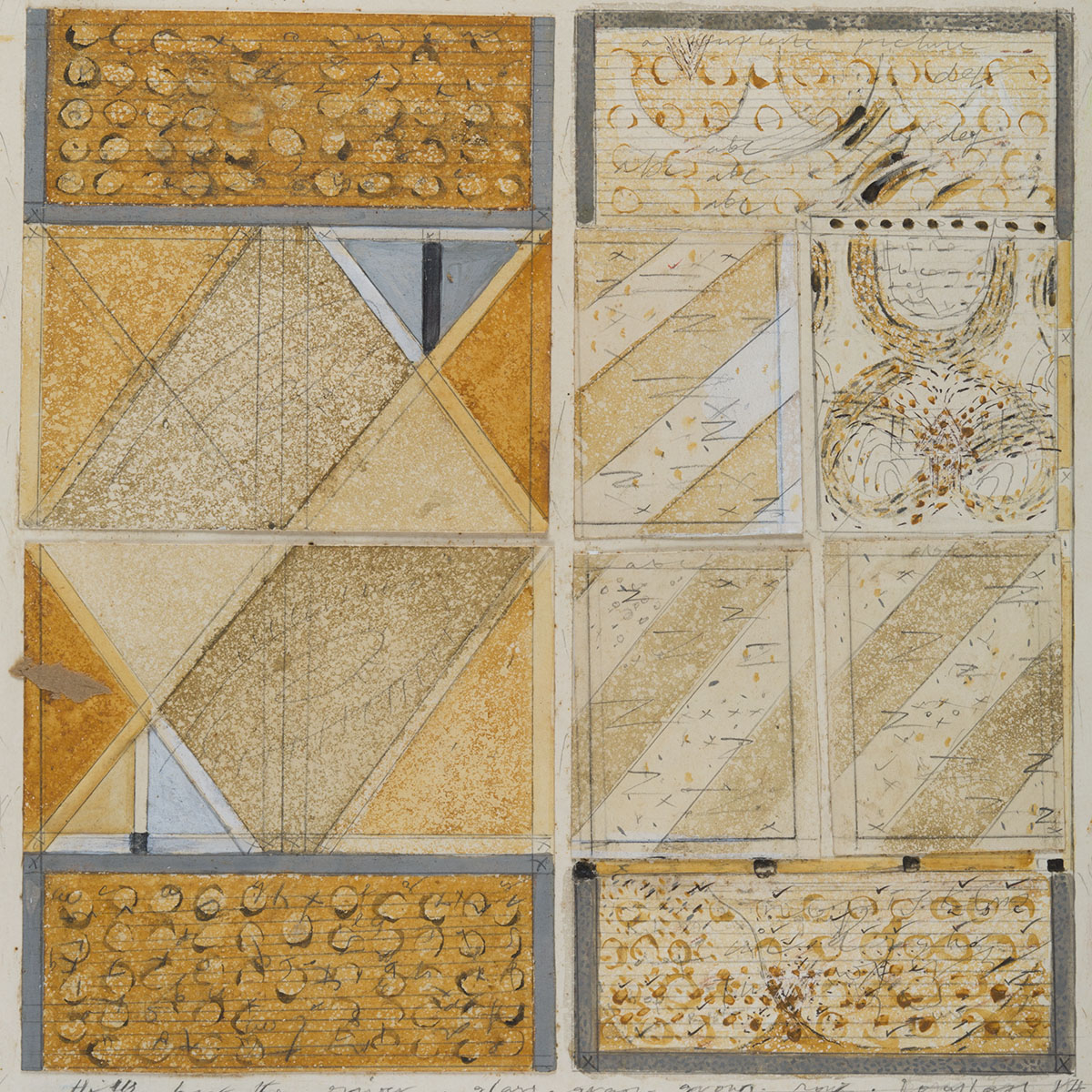A painter and sculptor of the Madras School, C Douglas is known for his abstract and figurative forms.
Born in Tellicherry (now Thalassery), Kerala, Douglas began painting at the age of twenty, when he travelled to Madras (now Chennai) to study painting at the Government College of Art and Craft (1971–76). While here, he learned drawing techniques under K Ramanujam and AP Santhanaraj and was introduced to the Madras Movement by KCS Paniker. After concluding his studies at the Government College, Douglas moved to the Cholamandal Artists’ Village.
In the 1980s, Douglas travelled across Europe, spending a considerable amount of time in West Germany, where he was introduced to the work of Expressionist artists such as Wols and Anselm Kiefer; their mixed-media works of postwar Europe drove much of Douglas’s work at this time. From 1994–96, Douglas also studied ceramics at the European Ceramics Centre in the Netherlands on a Charles Wallace Grant.
His early work, primarily those created in the 1970s, featured the motif of the fetus. These works also reflected Ramanujam’s influence in the use of line, abstraction and colour. In the 1980s, Douglas transitioned to exploring geometric themes and the use of mixed media, textural manipulation with crumpled papers, washed canvases and mixing pigment with synthetic materials such as glue. He also featured human figurines in his work, often depicted with angular faces and stick-like bodies.
After returning to the Cholamandal Artists’ Village in the 1990s, he began incorporating reds, greys, blacks and other muted tones in his work to explore alienation and isolation — themes he also explored through his ceramics. A recurring image in his work during this period was a figure cupping its ears, as in the ceramic work Bell (1994). Douglas has since expanded his stylistic vocabulary to include abstract and figurative styles of painting, drawing and mixed media, often illustrating angular portraits reminiscent of skulls and two-dimensional bodies.








![The façade of the Maneckji Seth Agiary, a Zoroastrian fire temple, is a standout example of the popularity of the Persian Revival Style in Western India in the 19th and 20th centuries. This style was often seen in the architectural patronage of the Parsis, who emerged as one of the most influential mercantile communities of British India. Popular motifs of this style, like the mythical lamasus (winged bulls with human heads) and the faravahar (a winged guardian spirit in Zoroastrianism), drew on the historical art and architecture of the Achaemenid and Sasanian empires from sites like Persepolis, Bisotun, Taq-e Bostan, Naqsh-e Rostam and Naqsh-e Rajab in Persia.
The Parsi community’s adoption of this style occurred largely due to their networks of global commerce and politics, allowing them to access and translate research of ancient Persia into visible symbols that underlined their association with antiquity, imperial power, and art.
نمای آتشکدهی زرتشتی مانِکجی سِت نمونهی بارزی از رواج سبک «احیای [معماری] ایرانی» در غرب هند طی سدههای نوزدهم و بیستم است. این سبک غالباً در بناهایی دیده میشد که پارسیان، از بانفوذترین جوامع بازرگان در هند بریتانیا، بانیشان بودند. نقشمایههای محبوب این سبک، مانند گاو بالدار اساطیری (لاماسو) و فَروَهَر (روح بالدار نگهبان در دین زرتشت)، برگرفته از هنر و معماری شاهنشاهی هخامنشی و ساسانی، در جاهایی چون تخت جمشید و بیستون و طاق بستان و نقش رستم و نقش رجب، بود.
اقتباس جامعهی پارسیان از این سبک بسیار مرهون روابط گستردهی تجاری و سیاسی آنها بود که دسترس به پژوهشها دربارهی ایران باستان و برگردانیدن آنها به نمادهای بصری را ممکن میکرد و بر پیوند پارسیان با دوران باستان و قدرت شاهنشاهی و هنر تأکید میکرد.](https://mapacademy.io/wp-content/plugins/instagram-feed/img/placeholder.png)
